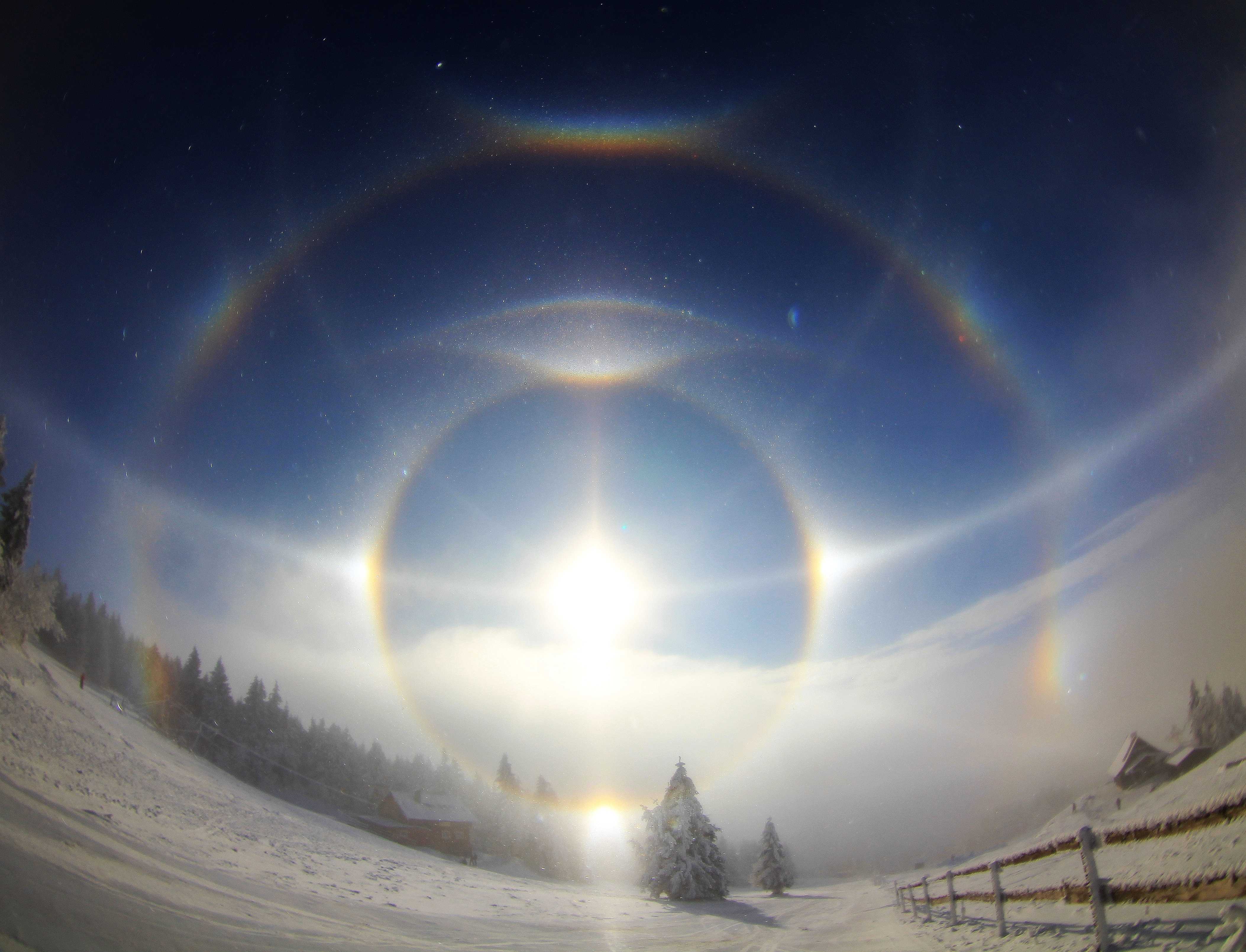Parhelic circle
(Section 3.2.3.1.7)This is a white, horizontal circle at the same angular elevation as the Sun. Bright spots may be observed at certain points of the parhelic circle. These spots occur most commonly a little outside the 22° halo (parhelia, often brilliantly coloured). Occasionally, bright spots (paranthelia) are seen at an azimuthal distance of 120° from the Sun and, very rarely, opposite the Sun (anthelion). When the parhelia, paranthelia or the anthelion are particularly bright, they are often called mock suns.
The corresponding phenomena produced by the Moon are called the paraselenic circle, paraselenae, parantiselenae and antiselene. When the paraselenae, parantiselenae or the antiselene are particularly bright, they are sometimes called mock moons. Parhelia and paraselenae are sometimes connected with the 22° halo by obliquely oriented arcs of Lowitz (or Lowitz arcs). The Lowitz arcs are a group of relatively rare haloes that occur outside the 22° halo. They are only seen when the Sun's elevation is high.




